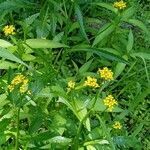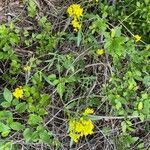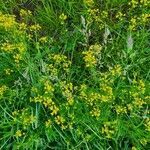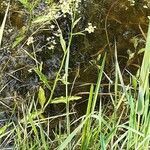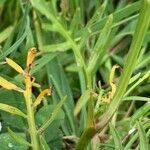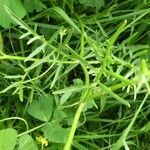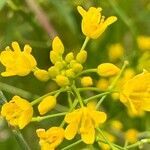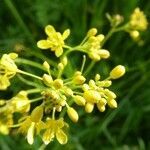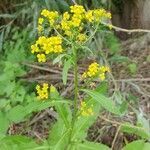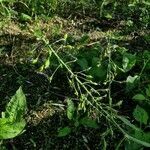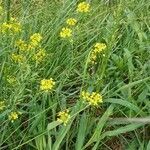Perennial rhizomatous herb. Stems erect, glabrous or finely hairy, 30-80 cm tall. Lvs ± glabrous, variable in shape, spathulate-oblanceolate, cuneate; margins toothed. Lower lvs petiolate, auriculate at base, deeply pinnatifid with lobes becoming shallower toward apex, 8-16 × 2-6-(7) cm. Upper lvs smaller, pinnatifid or toothed, sometimes linear; auricles becoming 0. Pedicels glabrous, erecto-patent to patent, sometimes deflexed at fruiting, (5)-7-10-(12) mm long. Sepals 2-3 × 1 mm. Petals bright yellow, 3-6 mm long. Silicle glabrous, elliptic to ovoid, 1.5-3-(4) × 0.6-1-(2) mm, but often not or poorly developed; valves veinless; style 1 mm long. Seeds reddish brown, c. 1 mm long, finely colliculate, in 2 rows per locule.
Erect or ascending perennial to 1 dm; stems hollow, often rooting below; lvs lanceolate to oblanceolate, to 12 cm, the lower or submersed ones commonly laciniate to pectinately parted, the upper narrower and merely dentate; pet about twice as long as the sep; mature pedicels 8–15 mm, horizontally spreading or somewhat deflexed; frs ellipsoid, straight, the body 3–6 mm, the stylar beak 1–2 mm; 2n=16, 32. Native of Eurasia, established in swamps and shallow water from Que. to Me. and Mass. and perhaps elsewhere. June, July.
A cabbage family herb.
